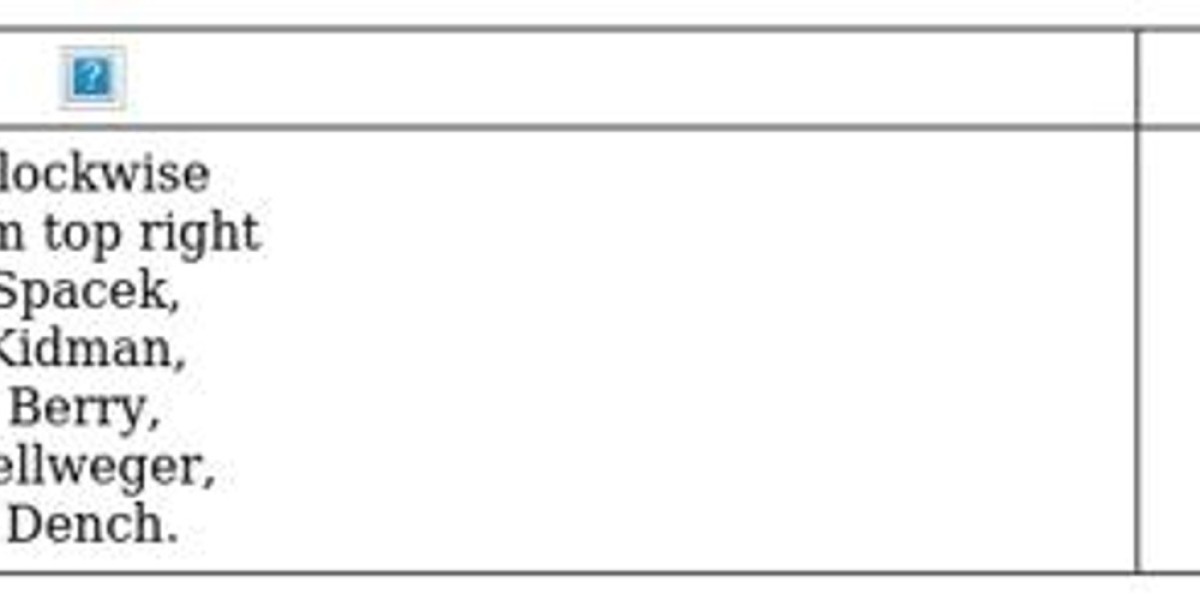
We've been tracking the explosive rise of DeepSeek R1, which has actually taken the AI world by storm in current weeks. In this session, we dove deep into the advancement of the DeepSeek household - from the early designs through DeepSeek V3 to the development R1. We likewise explored the technical innovations that make R1 so unique on the planet of open-source AI.

The DeepSeek Family Tree: From V3 to R1
DeepSeek isn't just a single design; it's a family of significantly advanced AI systems. The evolution goes something like this:
DeepSeek V2:
This was the foundation model which leveraged a mixture-of-experts architecture, where only a subset of professionals are used at reasoning, drastically enhancing the processing time for each token. It likewise included multi-head latent attention to minimize memory footprint.
DeepSeek V3:
This design presented FP8 training methods, which helped drive down training expenses by over 42.5% compared to previous iterations. FP8 is a less precise way to save weights inside the LLMs however can considerably enhance the memory footprint. However, training utilizing FP8 can usually be unsteady, and it is difficult to obtain the preferred training results. Nevertheless, DeepSeek uses numerous techniques and attains remarkably stable FP8 training. V3 set the stage as a highly effective model that was already economical (with claims of being 90% less expensive than some closed-source options).
DeepSeek R1-Zero:
With V3 as the base, the team then introduced R1-Zero, the very first reasoning-focused iteration. Here, the focus was on teaching the model not just to produce answers but to "think" before responding to. Using pure reinforcement knowing, the model was encouraged to produce intermediate reasoning actions, for example, taking extra time (frequently 17+ seconds) to resolve a basic issue like "1 +1."
The essential development here was making use of group relative policy optimization (GROP). Instead of depending on a conventional process benefit model (which would have required annotating every action of the reasoning), GROP compares multiple outputs from the model. By sampling a number of prospective responses and scoring them (utilizing rule-based measures like specific match for math or confirming code outputs), the system finds out to prefer reasoning that leads to the correct outcome without the requirement for specific guidance of every intermediate idea.
DeepSeek R1:
Recognizing that R1-Zero's unsupervised method produced thinking outputs that might be hard to check out or even blend languages, the designers went back to the drawing board. They utilized the raw outputs from R1-Zero to create "cold start" data and after that manually curated these examples to filter and enhance the quality of the thinking. This human post-processing was then used to tweak the initial DeepSeek V3 design further-combining both reasoning-oriented support learning and monitored fine-tuning. The outcome is DeepSeek R1: a design that now produces legible, meaningful, and trustworthy thinking while still maintaining the performance and cost-effectiveness of its predecessors.
What Makes R1 Series Special?
The most fascinating element of R1 (zero) is how it established thinking capabilities without explicit guidance of the thinking procedure. It can be even more enhanced by using cold-start data and supervised reinforcement learning to produce legible reasoning on basic tasks. Here's what sets it apart:
Open Source & Efficiency:
R1 is open source, allowing scientists and designers to inspect and develop upon its innovations. Its cost effectiveness is a major selling point especially when compared to closed-source designs (claimed 90% less expensive than OpenAI) that require massive compute budgets.
Novel Training Approach:
Instead of relying entirely on annotated thinking (which is both expensive and lengthy), the design was trained using an outcome-based technique. It began with quickly proven jobs, such as mathematics issues and coding exercises, where the correctness of the last response could be quickly measured.
By utilizing group relative policy optimization, the training process compares numerous generated answers to figure out which ones satisfy the wanted output. This relative scoring mechanism permits the design to find out "how to believe" even when intermediate reasoning is created in a freestyle manner.
Overthinking?
A fascinating observation is that DeepSeek R1 sometimes "overthinks" simple problems. For instance, when asked "What is 1 +1?" it may invest almost 17 seconds assessing different scenarios-even thinking about binary representations-before concluding with the proper response. This self-questioning and verification process, although it may seem inefficient in the beginning glance, might prove advantageous in complicated tasks where much deeper thinking is necessary.
Prompt Engineering:
Traditional few-shot prompting strategies, which have actually worked well for numerous chat-based designs, can actually degrade performance with R1. The developers suggest utilizing direct problem statements with a zero-shot technique that defines the output format plainly. This guarantees that the design isn't led astray by extraneous examples or tips that might interfere with its internal thinking process.
Getting Going with R1
For those aiming to experiment:
Smaller versions (7B-8B) can work on customer GPUs and even just CPUs
Larger versions (600B) need considerable calculate resources
Available through significant cloud companies
Can be deployed in your area by means of Ollama or vLLM
Looking Ahead
We're particularly intrigued by several implications:
The capacity for this approach to be applied to other reasoning domains
Effect on agent-based AI systems typically constructed on chat models
Possibilities for integrating with other guidance strategies
Implications for enterprise AI deployment
Thanks for reading Deep Random Thoughts! Subscribe for free to receive new posts and support my work.
Open Questions
How will this affect the advancement of future thinking models?
Can this approach be reached less proven domains?
What are the implications for multi-modal AI systems?
We'll be enjoying these developments closely, particularly as the community starts to try out and build on these methods.
Resources
Join our Slack neighborhood for continuous conversations and updates about DeepSeek and other AI developments. We're seeing interesting applications already emerging from our bootcamp participants working with these designs.
Chat with DeepSeek:
https://www.deepseek.com/
Papers:
DeepSeek LLM
DeepSeek-V2
DeepSeek-V3
DeepSeek-R1
Blog Posts:
The Illustrated DeepSeek-R1
DeepSeek-R1 Paper Explained
DeepSeek R1 - a brief summary
Cloud Providers:

Nvidia
Together.ai
AWS
Q&A
Q1: Which design should have more attention - DeepSeek or Qwen2.5 Max?
A: While Qwen2.5 is also a strong design in the open-source neighborhood, the choice eventually depends upon your usage case. DeepSeek R1 highlights innovative reasoning and an unique training technique that may be particularly valuable in jobs where verifiable reasoning is critical.
Q2: Why did significant suppliers like OpenAI go with monitored fine-tuning instead of reinforcement knowing (RL) like DeepSeek?
A: We ought to keep in mind upfront that they do use RL at the minimum in the form of RLHF. It is highly likely that models from significant service providers that have thinking capabilities already utilize something comparable to what DeepSeek has done here, but we can't make certain. It is likewise likely that due to access to more resources, they favored monitored fine-tuning due to its stability and the all set availability of big annotated datasets. Reinforcement knowing, although effective, can be less foreseeable and more difficult to control. DeepSeek's method innovates by using RL in a reasoning-oriented manner, enabling the model to discover efficient internal reasoning with only minimal process annotation - a technique that has actually shown appealing despite its intricacy.
Q3: Did DeepSeek utilize test-time compute strategies similar to those of OpenAI?
A: DeepSeek R1's style stresses performance by leveraging methods such as the mixture-of-experts technique, which activates only a subset of parameters, to reduce compute during inference. This focus on efficiency is main to its cost benefits.
Q4: What is the distinction between R1-Zero and R1?
A: links.gtanet.com.br R1-Zero is the preliminary design that finds out reasoning exclusively through support learning without specific procedure guidance. It creates intermediate reasoning steps that, while sometimes raw or larsaluarna.se blended in language, work as the structure for learning. DeepSeek R1, on the other hand, improves these outputs through human post-processing and supervised fine-tuning. In essence, R1-Zero offers the not being watched "stimulate," and R1 is the polished, more coherent version.
Q5: How can one remain updated with in-depth, technical research while managing a hectic schedule?
A: Remaining present involves a mix of actively engaging with the research study community (like AISC - see link to sign up with slack above), following preprint servers like arXiv, going to pertinent conferences and webinars, and getting involved in conversation groups and newsletters. Continuous engagement with online neighborhoods and collaborative research study jobs also plays a key function in keeping up with technical improvements.
Q6: In what use-cases does DeepSeek outshine models like O1?
A: The short response is that it's too early to tell. DeepSeek R1's strength, nevertheless, depends on its robust reasoning capabilities and its performance. It is particularly well suited for jobs that require verifiable logic-such as mathematical problem solving, code generation, and structured decision-making-where intermediate thinking can be evaluated and verified. Its open-source nature further permits tailored applications in research and business settings.
Q7: wiki.dulovic.tech What are the implications of DeepSeek R1 for business and start-ups?
A: The open-source and affordable style of DeepSeek R1 decreases the entry barrier for releasing sophisticated language models. Enterprises and start-ups can utilize its innovative reasoning for agentic applications ranging from automated code generation and consumer assistance to data analysis. Its flexible implementation options-on customer hardware for smaller sized models or cloud platforms for larger ones-make it an appealing option to exclusive solutions.
Q8: Will the design get stuck in a loop of "overthinking" if no right response is found?
A: While DeepSeek R1 has been observed to "overthink" simple issues by exploring multiple reasoning paths, it integrates stopping requirements and assessment mechanisms to avoid infinite loops. The support finding out structure encourages convergence toward a proven output, even in uncertain cases.
Q9: Is DeepSeek V3 totally open source, and is it based on the Qwen architecture?
(1).pngL.jpg)
A: Yes, DeepSeek V3 is open source and served as the structure for later versions. It is developed on its own set of innovations-including the mixture-of-experts technique and FP8 training-and is not based upon the Qwen architecture. Its design stresses efficiency and cost decrease, setting the stage for the reasoning developments seen in R1.
Q10: How does DeepSeek R1 perform on vision jobs?
A: DeepSeek R1 is a text-based design and does not integrate vision abilities. Its style and training focus solely on language processing and reasoning.
Q11: Can professionals in specialized fields (for instance, labs working on cures) apply these approaches to train domain-specific models?
A: Yes. The innovations behind DeepSeek R1-such as its outcome-based thinking training and efficient architecture-can be adapted to different domains. Researchers in fields like biomedical sciences can tailor these methods to construct models that resolve their specific difficulties while gaining from lower calculate costs and robust thinking capabilities. It is most likely that in deeply specialized fields, however, there will still be a need for monitored fine-tuning to get dependable results.
Q12: Were the annotators for the human post-processing professionals in technical fields like computer technology or mathematics?
A: The discussion suggested that the annotators mainly concentrated on domains where accuracy is quickly verifiable-such as math and coding. This recommends that competence in technical fields was certainly leveraged to guarantee the accuracy and clearness of the reasoning information.
Q13: Could the model get things incorrect if it depends on its own outputs for learning?
A: While the design is developed to enhance for right answers via reinforcement knowing, there is always a danger of errors-especially in uncertain circumstances. However, by assessing numerous candidate outputs and reinforcing those that cause proven outcomes, the training procedure lessens the probability of propagating incorrect reasoning.
Q14: How are hallucinations decreased in the model given its iterative thinking loops?
A: Using rule-based, proven tasks (such as math and coding) helps anchor the model's reasoning. By comparing multiple outputs and utilizing group relative policy optimization to reinforce just those that yield the correct outcome, the model is directed away from creating unfounded or hallucinated details.
Q15: Does the design depend on complex vector mathematics?
A: Yes, advanced techniques-including complex vector math-are integral to the execution of mixture-of-experts and attention mechanisms in DeepSeek R1. However, the main focus is on using these techniques to allow efficient thinking instead of showcasing mathematical intricacy for its own sake.
Q16: Some fret that the model's "thinking" might not be as fine-tuned as human thinking. Is that a valid issue?
A: Early models like R1-Zero did produce raw and in some cases hard-to-read reasoning. However, the subsequent improvement process-where human specialists curated and enhanced the reasoning data-has considerably boosted the clearness and dependability of DeepSeek R1's internal thought procedure. While it remains an evolving system, iterative training and feedback have led to meaningful improvements.
Q17: Which model variants are appropriate for regional deployment on a laptop with 32GB of RAM?
.jpg)
A: For regional testing, a medium-sized model-typically in the variety of 7B to 8B parameters-is recommended. Larger models (for instance, those with hundreds of billions of criteria) need substantially more computational resources and are better suited for cloud-based deployment.
Q18: Is DeepSeek R1 "open source" or does it use only open weights?
A: DeepSeek R1 is supplied with open weights, suggesting that its model criteria are publicly available. This aligns with the general open-source approach, allowing researchers and developers to additional explore and construct upon its innovations.
Q19: What would happen if the order of training were reversed-starting with supervised fine-tuning before without supervision support knowing?
%20Is%20Used%20In%20Biometrics.jpg)
A: The current approach permits the model to first explore and create its own reasoning patterns through unsupervised RL, and then refine these patterns with monitored approaches. Reversing the order might constrain the model's capability to discover diverse reasoning paths, possibly restricting its general efficiency in jobs that gain from self-governing idea.
Thanks for checking out Deep Random Thoughts! Subscribe totally free to receive brand-new posts and support my work.








